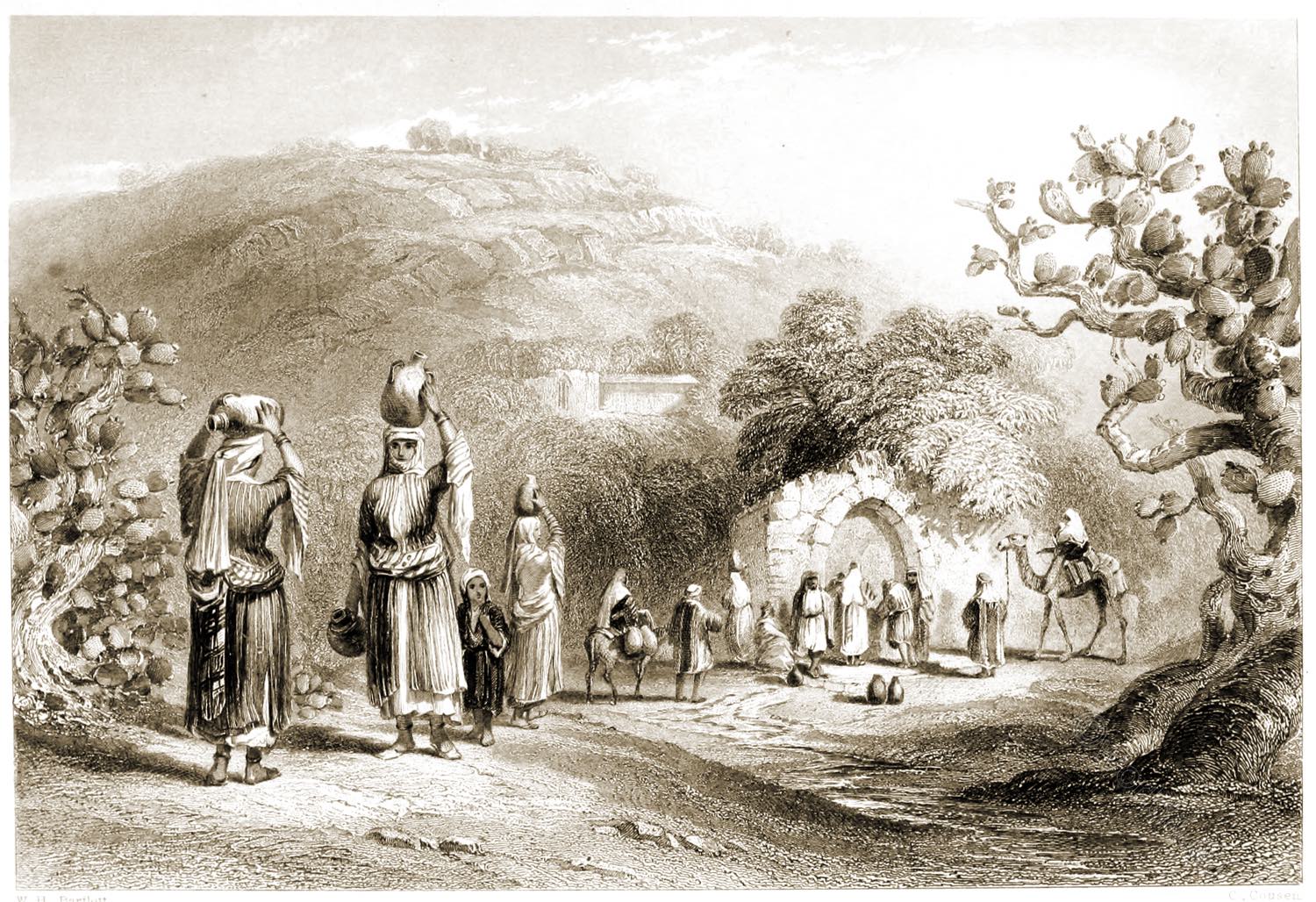
FOUNTAIN OF THE VIRGIN, NAZARETH.
by David Roberts.
As this is the only fountain in Nazareth, it is held in great respect by the Christians, not merely as important to the supply of water to the town, but in the belief that to this fountain the Mother of our Lord must constantly have come.
“The figures introduced were all drawn on the spot, and convey an accurate representation of the female costume of Nazareth. Round the face, and hanging down on each side, they wear rows of gold and silver coins, which relieved by their jet-black locks, have a remarkably graceful and novel appearance to the European eye. The younger women were in general remarkably beautiful; and as they perceived in tins instance that the strangers were Christians, they made no attempt to conceal their faces.” 1)

The source is under the Greek Church of the Assumption, eight or tens rods farther north; and thence the little stream is conducted by a rude aqueduct of stone, over which an arch is turned, where it pours its scanty waters into a sculptured marble trough, perhaps once a sarcophagus. The Church is built over the source; as the spot where, the Greeks say, the Virgin was saluted by the Angel Gabriel. The aqueduct seems to have existed in Pococke’s day.
In the century before, travelers speak of a reservoir here, of which there is now no trace. In summer the Fountain dries up, and water must be brought from distance. 2)
1) Roberts’s Journal. 2) Biblical Researches, iii. 188.
Source:
- The Holy Land, Syria, Idumea, Arabia, Egypt, & Nubia, by David Roberts, George Croly, William Brockedon. London: Lithographed, printed and published by Day & Son, lithographers to the Queen. Cate Street, Lincoln’s Inn Fields, 1855.
- The Christian in Palestine; or, Scenes of sacred history, historical and descriptive by Henry Stebbing (1799-1883). London: G. Virtue 1847.

The Fountain of Mary or Virgin Fountain (Hebrew: מעייין מרים; Arabic: عين العذراء, Ain il-‘adra or “The Fountain of the Virgin Mary”) is a place where, according to some Christian believers, the angel Gabriel appeared to the Virgin Mary and announced to her the birth of the Son of God, an event known as the Annunciation.
The well is located in present-day Nazareth in northern Israel, below the Greek Orthodox Church of the Annunciation, St Gabriel. It was built over an underground spring that traditionally served as the main water source for the Arab villagers of the city for centuries, perhaps even millennia. It represented the only water supply in the area. According to Catholic tradition, the site of the Annunciation is considered to be a well within the Greek Orthodox Church of the Annunciation, which is, however, fed by the same spring.
The earliest written account that mentions a well or spring as a place of preaching comes from the Protoevangelium of James, a non-canonical gospel from the second century. The author writes: “And she took the pitcher and went out to draw water, and behold, a voice said: ‘. Hail Mary, full of grace, blessed art thou among women”.
In Luke’s Gospel, however, this place is not mentioned as the place of the Annunciation. Similarly, the Qur’an reports that a spirit visited the chaste Mary to tell her that the Lord had given her a son, without mentioning the place.

Continuing
Discover more from World4 Costume Culture History
Subscribe to get the latest posts sent to your email.






